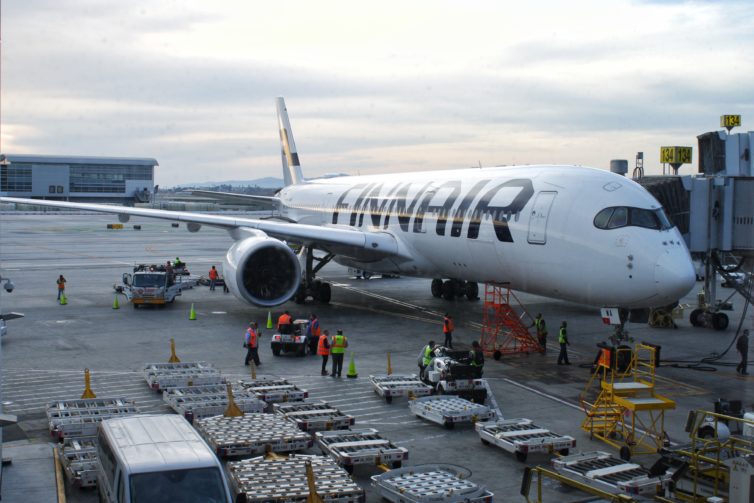
Late last year we spent a fun couple of days flying long-haul with Finnair and interviewing the head of their flagship Airbus A350 fleet. But we never actually flew the A350 ourselves, since Finnair’s US routes were all handled by their older A330s. That changed a month ago, when Finnair re-launched flights to LAX after a long hiatus and gave the honor to the A350. Obviously we weren’t going to miss the chance to cover the inaugural, and the folks at Finnair gave us the chance.
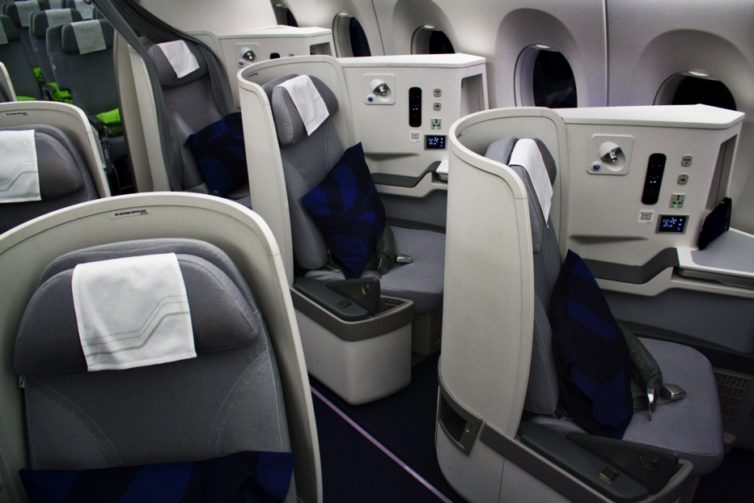
The onboard product lived up to the hype, with universal aisle access, lie-flat seats, Nordic style, and even a northern lights simulation on the ceiling. And it was just as fun covering Finnair’s pre-flight festivities on the ground. Clearly this route was a big deal for the Finnair team, getting the honorific flight numbers AY01 and AY02.
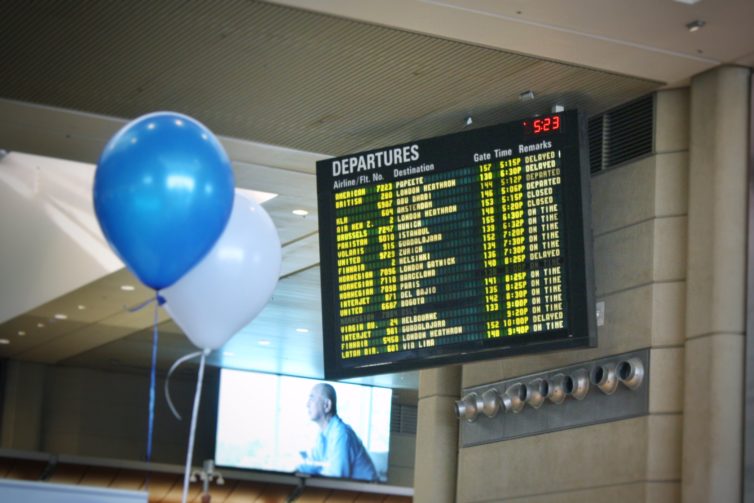
Read on for the full scoop on Finnair’s (re)inaugural celebration of its service from Los Angeles to Helsinki.
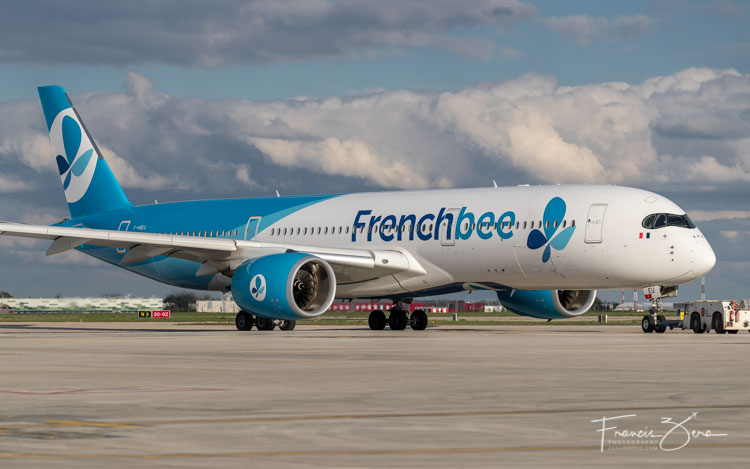
A French Bee A359 on the taxiway at Orly Airport in Paris. It’s a very lovely livery, IMHO.
Can you have low-cost airfare and elegant service? French Bee definitely wants you to think so.
French Bee is a relatively new low-cost carrier, having begun operations in September of 2016. They’re based at Paris Orly Airport (ORY).
With a current fleet of three Airbus aircraft (one A330-300 and two A350-900s) flying to five destinations, they’re a relatively small player, and they’re France’s first LCC. They also have one A350-1000 on order, currently slated for delivery later this year.
From their ORY hub, they fly to San Francisco, Punta Cana in the Dominican Republic, Papeete, Tahiti, and Saint Denis, Reunion, all of which are vacation destinations for French travelers.
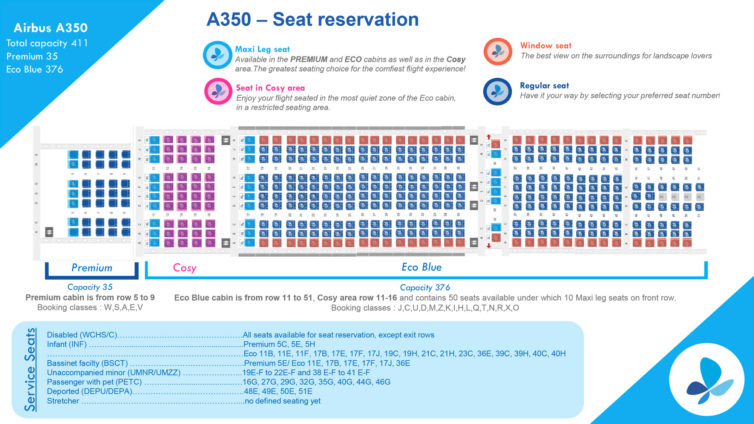
French Bee’s A350-900 seat map
French Bee is part of the Dubreuil group, which also owns Air Caraîbes, a somewhat larger airline which primarily serves Caribbean holiday destinations from the same ORY base.
Interestingly, French Bee started out being named French Blue. When the airline applied for a U.S. air carrier permit in November 2017, JetBlue objected to the idea of allowing another airline to operate in the United States that had the word “blue” in its name. That eventually led to a rebrand as French Bee in January 2018.
With a target audience of budget-minded holidaymakers, the airline’s pricing is very competitive; fares typically run less than $700 return between SFO and ORY. An additional $250-ish buys you a premium-class seat (more on that later).
There are 411 seats on a French Bee A359: 35 Premium, 50 Cosy, and 326 in Eco Blue.
I flew with French Bee on their SFO-ORY-SFO route the first week of April, traveling in 10-abreast Smart Economy/Eco Blue on the outbound leg and in their Premium cabin on the return flight.
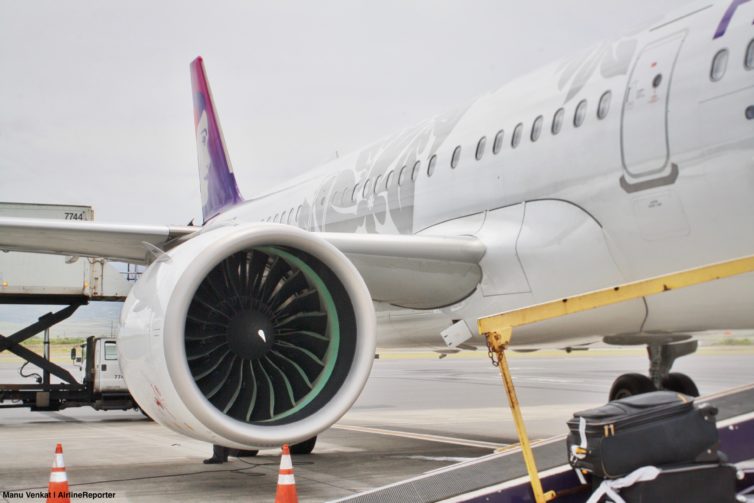
Right plane, right size, right mission. Hit the trifecta and — if you’re an airplane — you’ve earned a fruitful career in your airline’s fleet. Hawaiian Airlines has been flying for a mind-blowing 90 years, and for most if its recent past it’s had two sides to its fleet: big double-aisle aircraft like the Airbus A330 and Boeing 767 (recently retired) for long-haul flights to the Hawaiian islands, and smaller single-aisle planes for short hops between the islands.
But over the past few years, led by the U.S. legacy airlines, Alaska, and (most recently) Southwest, we’ve seen an explosion of a new middle market: extended-operations-certified narrow-body (AKA single-aisle) planes connecting the West Coast and the Hawaiian Islands. A lot of those flights hit secondary markets other than Honolulu, like Maui, Kauai, and the big island.
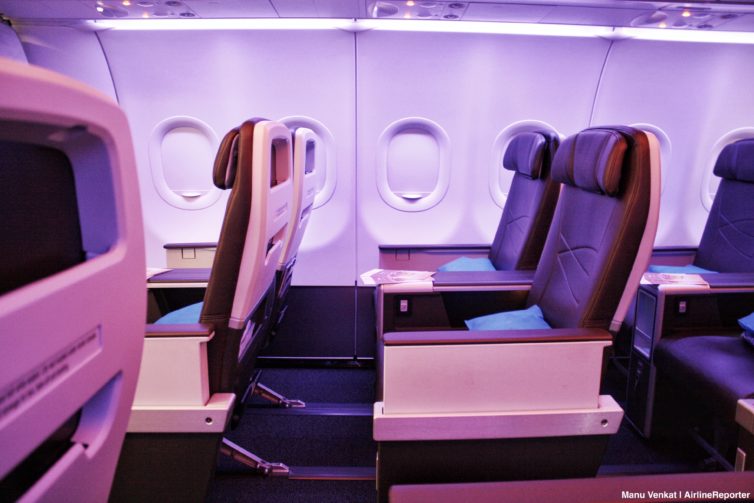
Hawaiian Airlines wanted to get in on that game, and they picked the Airbus A321neo to do it. The fuel-efficient next-gen narrowbody kicked off service with Hawaiian in early 2018, featuring a new premium cabin seat designed for medium-haul flights. And on a recent flight from Oakland to Maui, we put Hawaiian’s newest plane and seat to the test.
Read on as we say aloha to the Hawaiian Airlines A321neo!

The business end of a Cessna 172, the type of plane I’ll be training in
Yep. I’m finally doing it.
After close to a decade of talking about taking flying lessons, and after a couple of false starts, I’ve plunked down my money and started ground school last month with Galvin Flying at King County International Airport, aka Boeing Field, aka BFI, in Seattle.
Flying is both a spendy and time-intensive process. I’ve taken a number of introductory flight lessons, and at one point I actually started flight training with a private instructor and self-guided ground school (that’s the experience that made me realize a formal program would be better for me). I’ve also ridden along with several friends and their instructors on their own training flights.
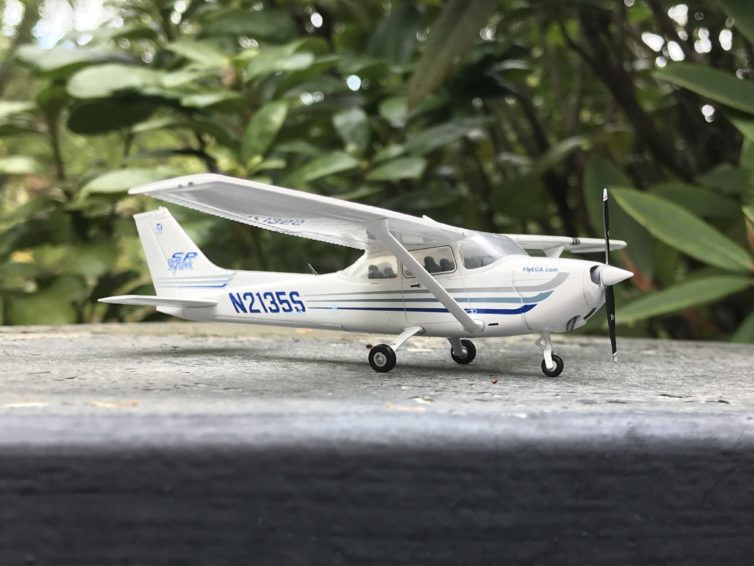
Of course I needed a model C172 to help with training
Anyway, here I am, about halfway through ground school. Now, as JL has already told you, formal ground school is optional, as there are many legit self-study options available that will prepare you for the FAA written exam. Key to any learning endeavor – especially one for folks for whom school of any kind is a couple of decades in the past – is knowing your learning style preferences.
From experience, I know that my most effective learning style is a combination of books and a human instructor, hence my choice of classroom-style ground school. Other folks might prefer videos, still others might choose a self-paced pre-packaged program; all those options are available.
Student pilot requirements get their own chapter in the FAR/AIM, which is the combined set of Federal Aviation Regulations (FAR) and the Aeronautical Information Manual (AIM). It’s the bible for flying in the U.S. I’m here to tell you that it definitely contains lots more rules and regulations than the real Bible.
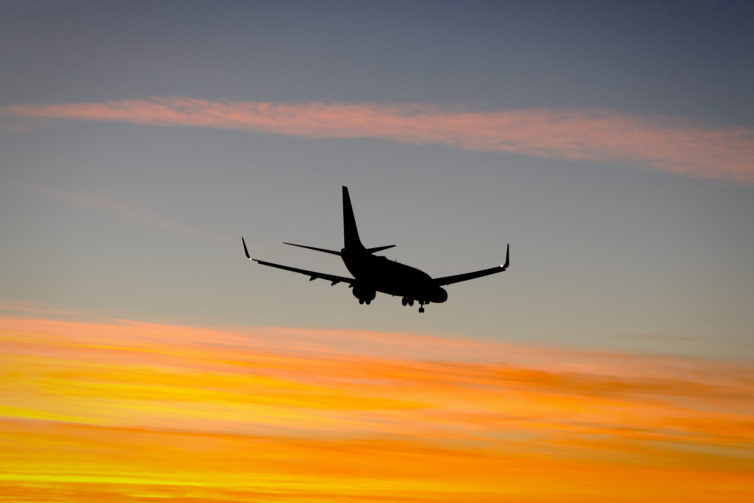
A Continental 737 (N13716) lands into the sunset at IAH in late 2010 – Photo: JL Johnson
A few months ago, we brought you the story about how I was excited to begin attending ground school in pursuit of unlocking my life-long dream of learning to fly. I was excited, ambitious, and, in retrospect, naive. If you haven’t read that piece, it’s a quick read and contrasts nicely against this one.
Life’s path is littered with success and failure. And while we tend to hear more about success, failure is where some of the most valuable learning occurs. So this is the story out how, despite learning a lot while attending ground school, I flunked out.
This is a positive story. Trust me and read on…









